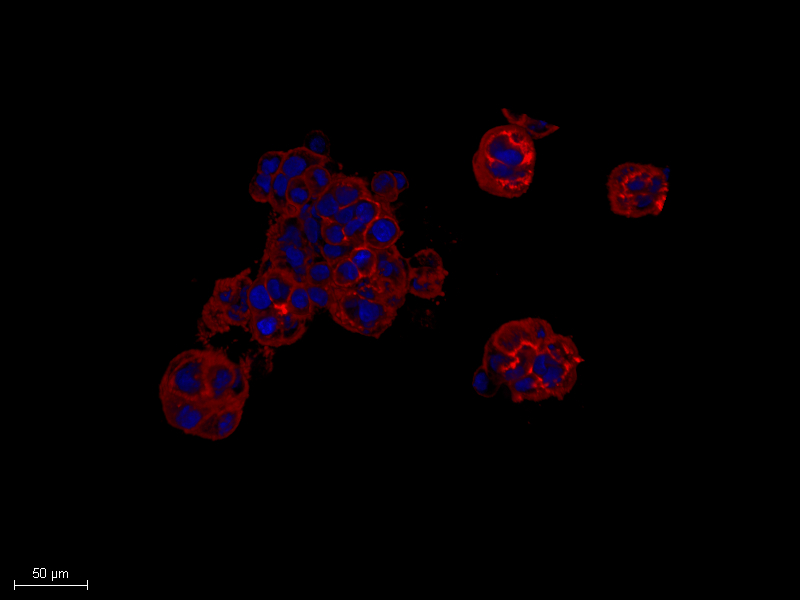Biomedical potential of fucoidan, a seaweed sulfated polysaccharide: from a anticancer agent to a building block of cell encapsulating systems for regenerative medicine
| Project | NOVOMAR :: publications list |
| Title | Biomedical potential of fucoidan, a seaweed sulfated polysaccharide: from a anticancer agent to a building block of cell encapsulating systems for regenerative medicine |
| Publication Type | Conference Abstract -ISI Web of Science Indexed |
| Year of Publication | 2016 |
| Authors | Silva T. H., Oliveira C., Reys L. L., Soares da Costa D., Novoa-Carballal R., Oliveira N. M., Ferreira A. S., Nunes C., Silva S. S., Martins A., Coimbra M. A., Mano J. F., Neves N. M., and Reis R. L. |
| Abstract | Introduction: Marine macroalgae or seaweeds synthesize a wide variety of polymers and smaller compounds with several bioactivities, among which the sulfated polysaccharides acquire greater relevance not only due to the reported antioxidant, antiviral and anticancer[1] activities, but also to the resemblance of extracellular matrix glycosaminoglycans found in the human body[2]. In this study, the potential of fucoidan (Fu) isolated from brown seaweed Fucus vesiculosus for therapeutical use has been evaluated, focusing in its performance as antitumoral agent (bioactive role) or as building block of cell encapsulating systems (structural role). Materials and Methods: The anticancer activity of Fu extracts was assessed by evaluating the cytotoxic behavior over two human breast cancer cell lines (MCF-7 and MDA-MB-231) in in-vitro culture, using human fibroblasts and endothelial cells (HPMEC-ST1 and MRC-5, respectively) as reference. Regarding the structural role, Fu was modified by methacrylation reaction (MFu) using methacrylic acid and further crosslinked using visible radiation and triethanolamine and eosin-y as photoinitiators. The photocrosslinking was performed on MFu solution droplets placed in a silica-based superhydrophobic surface[3], allowing the formation of particles[4] (since natural Fu is highly soluble in water and ion gelation is not effective). Biological performance of the developed particles was assessed by in vitro culture of fibroblasts and pancreatic cells (L929 and 1.1B4, respectively) in contact with MFu particles, up to 7 days. The ability of the developed materials to support adhesion and proliferation of cells was evaluated for both types of cells. Results and Discussion: The tested anticancer activity is not ubiquitous on Fu extracts, being dependent on its chemical features, with molecular weight (Mw) representing a particular role. Specifically, Mw values around 60 kDa exhibited cytotoxic effects to human breast cancer cell lines, while not affecting normal fibroblasts or endothelial cells (which represent the cells of the healthy tissue that would be closer to the tumor in a real situation). A concentration range of 0.2 to 0.3 mg mL-1 from the selected Fu extract could be considered as the therapeutic window for further studies. Regarding fucoidan’s role on innovative biomaterials, the developed MFu particles could support the proliferation of fibroblasts (L929), but also of human pancreatic beta cells (1.1B4), which tend to form pseudo-islets after 7 days in culture (Fig. 1). This pancreatic cells could be also successfully encapsulated, opening a new route for a diabetes mellitus type 1 therapeutic approach. Fig. 1: Confocal microscopy images of 1.1B4 cells cultured in the presence of fucoidan-based particles and organized in pseudo-islets (red – actin; blue – nuclei). Conclusion: The present work establishes fucoidan as a high performance building block for the development of advanced therapies for cancer (targeted therapy) or tissue and organ regeneration. It shed light on the relation between chemical structure and biological activity towards anti-cancer effect and proposes novel beta cell laden particles as injectable insulin producing systems to tackle diabetes. |
| Journal | Front. Bioeng. Biotechnol |
| Conference Name | 10th World Biomaterials Congress |
| Pagination | 221 |
| Date Published | 2016-03-30 |
| Conference Location | Montréal, Canada, 17 May - 22 May, 2016 |
| ISSN | 2296-4185 |
| DOI | 10.3389/conf.FBIOE.2016.01.00221 |
| URL | http://www.frontiersin.org/10.3389/conf.fbioe.2016.01.00221/event_abstract |
| Keywords | biomacromolecule, biomaterial, Biomimetic, Tissue engineering |
| Rights | openAccess |
| Peer reviewed | no |
| Status | published |









